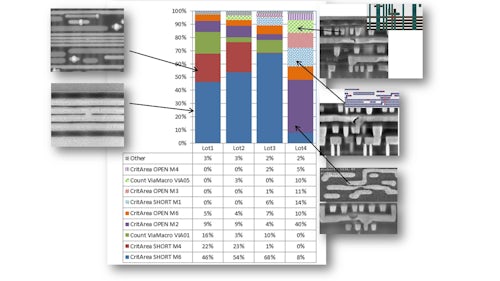Root cause deconvolution: The next step in scan diagnosis resolution
Scan logic diagnosis turns failing test cycles into valuable data
Scan diagnosis is an established method to locate defects in digital circuits. The quality of diagnosis results is measured using two metrics; accuracy and resolution. Accuracy is a measurement of whether the diagnosis result contains the actual defect or not. Resolution measures the area of the defective location captured by a suspect. The area is a bounding box of a defect and the length of the list of candidates. More candidates leads to more bounding boxes and more search area. Thus, in general, a shorter list of candidates has a better resolution than a longer list.
However, diagnosis results contain ambiguity, or noise, in the diagnosis that limits the resolution. RCD eliminates the noise from the diagnosis results and determines the underlying root causes represented in a population of failing devices.
This paper describes the challenges of scan diagnosis resolution, the benefits of applying the RCD statistical method, plus a more detailed description of how it works and examples from published results of real world case studies.
